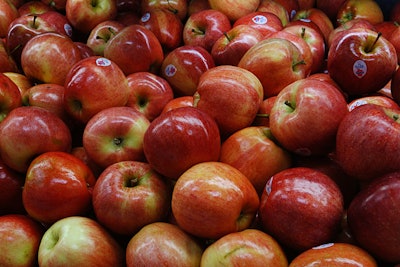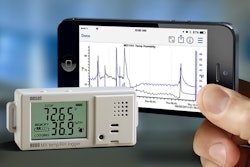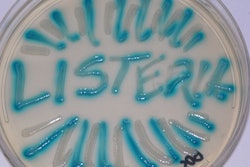
Maintenance of the cold chain is critical to protecting the quality and safety of horticultural products, including fruit, vegetables and ornamentals. Cold chain management begins as soon after harvest as possible. For some highly perishable crops, like berries or asparagus, delays of more than one hour can result in reductions in marketable product. Fruits, vegetables and cut flowers should be protected from sunlight after harvest and during transportation to the packing area.
Good Economics
Why should you go to the effort and expense to maintain the cold chain after harvest? It is well proven that exposure of fresh produce to warm temperatures results in loss of saleable weight and reductions in market quality and shelf life. Sometimes the effect is not immediately noticeable, but will appear later in the marketing chain. Maintaining produce at the lowest safe temperature reduces physiological changes such as loss of sugars and acids, growth and sprouting, growth of bacteria and fungi which can lead to active decay, water loss and shriveling, and growth of harmful pathogens. Maintenance of low temperatures generally maintains the product at a higher standard of quality and safety.
Pre-Cooling
Pre-cooling should be practiced whenever feasible to rapidly remove the field heat from products. Hydro-cooling and forced-air cooling are the most common pre-cooling methods. Vacuum cooling is also used for some vegetables, such as lettuce, leafy greens and cauliflower. When these methods are not available, room cooling should be used. The method of choice depends on the type of product and length of storage desired.
Tender fruit such as berries are often packed directly in the field and, therefore, forced-air cooling or room-cooling are generally the only options. Forced-air cooling is highly recommended for these fruit due to their high perishability. Hydro-cooling can increase decay susceptibility in some fruit, such as table grapes and strawberries, due to the difficulty of removing moisture after cooling. Hydro-cooling is frequently used for apples, peaches, nectarines, sweet corn, and cherries, and sometimes used for pears and broccoli.
Forced-air cooling can be accomplished with fruit in bins, field lugs or packed cartons. Many products packed in the field, such as berries, are forced-air cooled in the packed cartons. The important factor is the ability to move the cold air past the product within their container. Container ventilation and sufficient fan and refrigeration capacity are critical. Products should not be left on the forced-air cooler beyond the time required to cool by 7/8s of the difference between the initial product temperature and the air temperature.
The final 1/8 cooling can take a very long time as the product temperature approaches the air temperature. Lengthy cooling may lead to excessive dehydration of the product. The temperature at 7/8ths cool is calculated by the following formula:
(Starting fruit temperature – cool room air temperature) x 0.875
Fruit temperature should be monitored in the warmest location on the forced-air tunnel during cooling—usually the inside location on the pallet furthest from the fan—to determine when it reaches 7/8ths cooling. For smaller operations, it is simple to design a small forced-air cooler to cool a couple of bins or half a dozen cartons at one time in a cold room. All that is needed is a fan mounted in a piece of plywood and a tarp (see reference #1).
Hydro-cooling provides rapid cooling for products that can tolerate being wetted. The products travel through a cold water bath or a shower of cold water. Movement of water past the surface of the product during hydro-cooling will speed the rate of cooling, and the colder the water, the faster the cooling. Care should be taken with shower systems not to damage fragile products.
For sweet cherry, a screen should be installed in the shower system no higher than 8-inches above the fruit surface to break the fall of the water droplets and avoid pitting injury. Hydro-cooler water must also be sanitized to prevent the spread of pathogens. A range of water sanitizers can be used, including sodium hypochlorite (liquid chlorine), ozone, peroxyacedic acid and chlorine dioxide. When sodium hypochlorite is used, care should be taken to avoid accumulation of sodium from excessive reuse of water before the hydro-cooler water is changed. Build up of sodium has been shown to damage the skin of apples and pears.
Vacuum-cooling is used with products in packed cartons, particularly products with a high surface to volume ratio such as lettuce and other leafy greens. In a specialized vacuum chamber, the absolute pressure of the atmosphere surrounding the product is reduced, which results in lowering the boiling temperature of water in the product. If the pressure is lowered enough, the water will boil at the temperature of the product.
Sensible heat is given up by the product to change the liquid into vapor, and the product cools. The process results in some water loss from the product and, in some cases, water is sprayed on the top of the product before the vacuum is created to reduce the amount of water lost from the product.
Transportation, Distribution
After pre-cooling, fruits should be stored at their optimum temperature to extend the storage life (see reference #4). It is important to recognize that some fruit, vegetables and ornamentals are chilling sensitive. This means that they are damaged by exposure to temperatures above the freezing point. Great examples are basil, tomato, and banana. For many tropical fruit, they should not be stored at temperatures lower than 50 or 55°F.
Subtropical fruit such as citrus should be stored at temperatures between 32 and 57°F, depending on the type and growing location. These optimum temperatures should be maintained throughout transportation and distribution, except in cases where fruit are being held at warmer temperatures to enhance ripening.
Further Reading
All of these references can be found at the UC Davis Postharvest Technology Center website: http://postharvest.ucdavis.edu
1. Kitinoja, L. and J.F. Thompson. 2010. Pre-cooling systems for small scale producers. Stewart Postharvest Review 2:2-14.
2. Thompson, James F., F. Gordon Mitchell, Tom R. Rumsey, Robert F. Kasmire and Carlos H. Crisosto. 2008. Commercial cooling of fruits, vegetables and flowers, Revised Edition. UC ANR Publication #21567. http://postharvest.ucdavis.edu
3. Thompson, James, Marita Cantwell, Mary Lu Arpaia, Adel Kader, Carlos Crisosto, and Joe Smilanick. 2001. Effect of cooling delays on fruit and vegetable quality . Perishables Handling Quarterly Issue 105. http://postharvest.ucdavis.edu/datastorefiles/234-8.pdf
4. Properties and Recommended Conditions for Storage of Fresh Fruits and Vegetables. http://postharvest.ucdavis.edu/Produce/Storage/index.shtml














